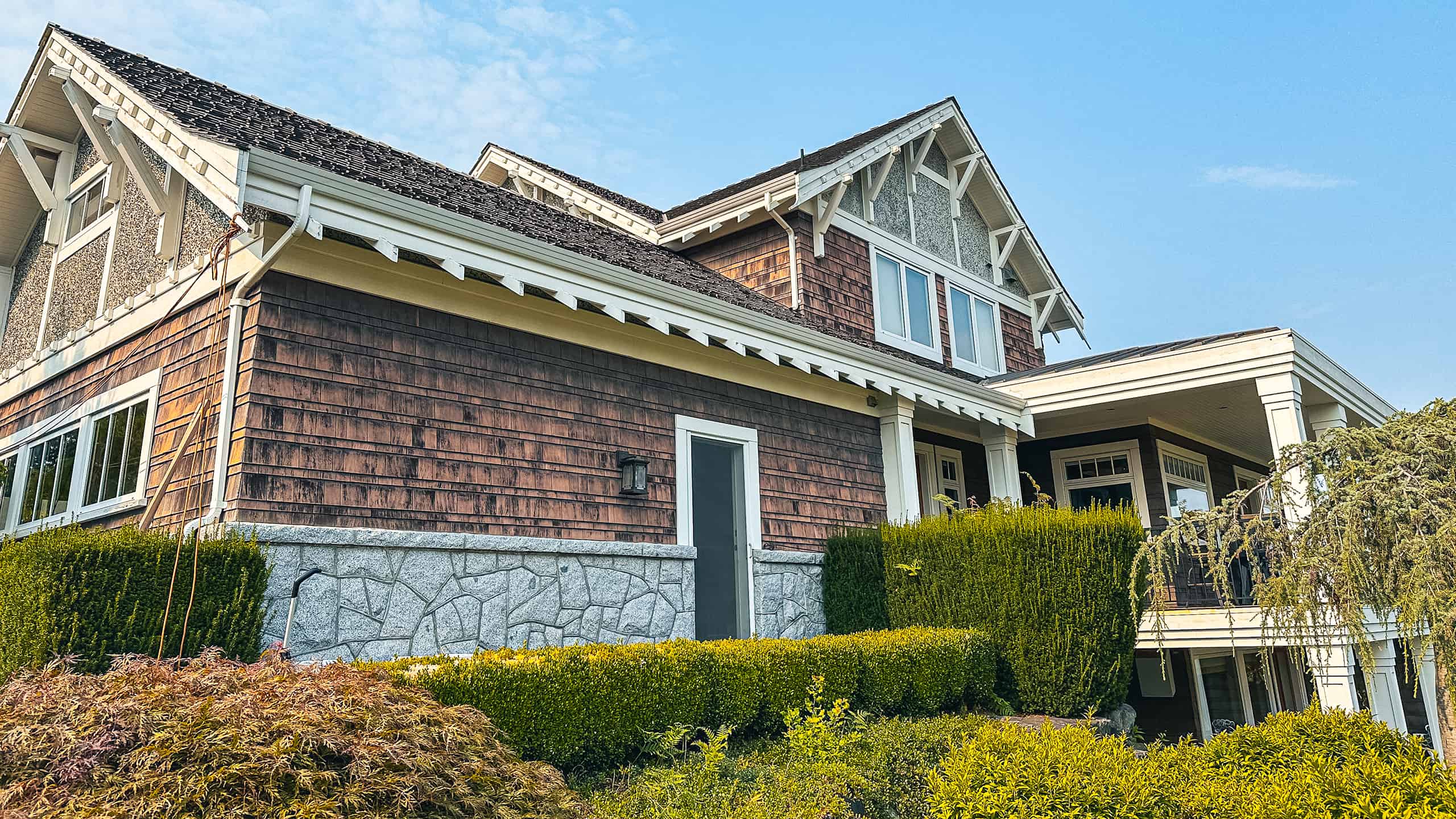Many different kinds of siding are found on residential homes. Over the last few decades, varying types have been popular for one reason or another. Nowadays, the two most commonly installed materials are vinyl and hardie board (or called “hardie plank”). Some designs are meant for style, others for function, and others strictly for budget. Unfortunately, some siding decisions are made solely for appearance or cost and don’t consider the weather. What one designer will choose for a hot and sunny climate should differ from that for a wet, cold and humid environment. In British Columbia, it’s common to find poorly done stucco on older houses. Not all architectural decisions take weather into account. Bad decisions have led to many rot issues, generating excessive repair costs.
In years past, as the stories go anyway, stucco was quite popular in the southern regions of the United States. This style of siding has made its way up into northern areas, including the Lower Mainland. However, as most people know, the weather in California is much different than in Vancouver. The problem with the older, more traditional stucco is that it’s very porous. Rain can lead to massive issues with this type of siding. The moisture doesn’t take much time to make its way through the material, leading to rot in the wood behind it. Aside from the rot that can occur, it can also dirty quickly.
With time, weather and other conditions, all types of siding get dirty. Most homes in the Lower Mainland have been framed and boarded with wood. Before any siding is installed, a protective house wrap is stapled on; this is meant to act as a barrier should any rain make its way through the siding. The critical thing to note is that it’s not 100% waterproof. It’s meant to be rainproof. This fact matters when learning the best way to clean siding. Commonly, siding is layered and stacked in a way that allows rain to travel in a downward direction without getting behind the siding. Generally, you want to be mindful not to use high pressure when cleaning siding. Careful precautions should also be taken to avoid spraying in a direction that will promote water leaking through the siding.
The most porous types of siding are those of stucco and wood. This makes them the most susceptible to moisture and, thus, organic bacterial growth. Hardie board and vinyl are safer options for deterring moisture and growth. However, they are not impervious. Initial bacterial growth is difficult to see and will generally go unnoticed. It’ll start where it can in tiny places and then multiply into a very noticeable dark colour, causing the exterior of your home to look dirty. A person may not notice any growth within the first year. It’s most noticeable sometime between two and four years. When cleaning siding, the best practice is to do so with soft pressure. In addition, it’s ideal to use more than water. By this, we mean the application of a cleaning solution directed at bacterial growth. After eliminating the bacteria, it’s safe to rinse the cleaning residue and dead bacteria off the siding.
In conclusion, all siding needs to be regularly washed. Since siding is not waterproof, an appropriate method should be chosen to avoid spraying water behind it. Since most siding is porous or at risk of bacterial growth, a different approach should be picked than standard pressure washing. Soft-washing is easily the most effective way to eliminate the bacteria. This method will keep your home looking clean for a long time. And since soft-wash cleaning methods have much lower PSI than typical pressure washing, the risk of causing water damage is significantly mitigated. For a quick and professional house consultation, please don’t hesitate to contact Zander SoftWash Limited. We’re based in Abbotsford BC, and offer our service anywhere in the Lower Mainland. Check out our services page for other surfaces we clean!

